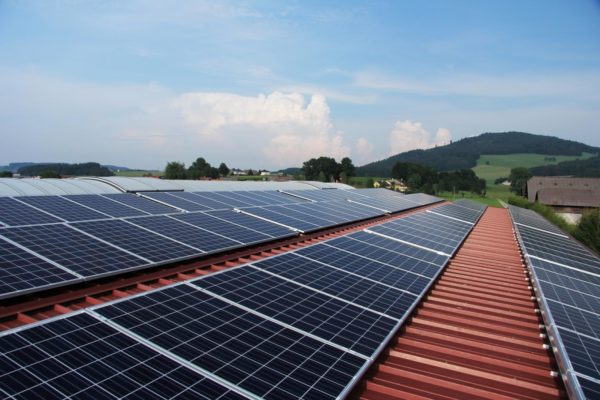Cheaper renewable energy is reshaping how electricity is generated and consumed. In many U.S. electricity markets, including Texas, coal-fired power plants are being retired because they can no longer compete on price compared with other sources of energy, including wind and solar.
But is there a way to still make use of all those old coal plants and mines?
Brooke Holleman, a graduate student in UT Austin’s Energy Institute, has an answer: Turn them into utility-scale solar farms.
Her research focuses on the intersection of energy policy, land use and emergent technologies. Holleman is pursuing a master’s degree in the Jackson School of Geosciences and the LBJ School of Public Affairs.

“Out of the coal ashes could rise a phoenix,” Holleman recently wrote in an op-ed published in Texas Monthly that summed up her idea, as detailed in a 70-page thesis for her dual master’s in energy and earth resources (EER) and public policy.
The concept of converting 40-year-old decommissioned power plants into state-of-the-art solar arrays was a no-brainer, she said.
“The market is changing. Low wholesale electricity prices, cheap natural gas and increased renewable generation have made operating these plants uneconomical.”
Inspiration for the research project had its roots in Holleman’s experience. While an undergraduate at the University of Oklahoma, she spent a summer interning with the state’s Department of Environmental Quality, where she conducted mapping for Superfund site remediation.
After completing her B.A. in environmental sustainability, she worked at the agency for a year, assisting in the inspection and cleanup of contaminated sites, including a chemical company and a former battery casing facility, before beginning her graduate work at UT in 2016.
When Texas’ biggest electricity generator, Luminant, announced it would close three of its coal-fired power plants, the research project Holleman had been toying with finally came into focus.
For decades, “mine mouth” power plants, so named because they generate power from coal mined on site, have benefitted from the vast, shallow belts of lignite coal that traverse sections of East and Central Texas. Lignite is considered the lowest grade of coal because of its high moisture content and low energy density. Carbon dioxide emissions from power plants fueled by lignite are generally much higher per megawatt than from other types of coal.
Now that the plants are being retired, the reclaimed landscape presents a unique opportunity for clean energy investment, specifically solar, said Holleman. The land, which could be flattened and re-vegetated with grass, probably would have little potential for any future use without costly cleanup efforts.
Whereas West Texas has the state’s highest solar potential, the shuttered coal facilities are conveniently located within the state’s transmission grid, close to the population centers of Dallas, Houston, Austin and San Antonio.
“You could put solar in a lot of places,” said Holleman, noting that the siting of solar farms is based on project-specific assessments and detailed economic analysis.
Building new transmission lines is extremely expensive, she added, “and more energy is lost the farther you transmit electricity.”
“If transmission infrastructure is already in place, you might as well try to leverage it.”
Transforming abandoned coal plants and mines into large solar farms could be a “public investment,” based on how the state’s electric grid operator, the Electric Reliability Council of Texas (ERCOT), approves transmission projects.
A solar farm will not employ the 800 workers laid off from a coal plant closure, Holleman noted, but investing in utility-scale solar arrays on site would replace power plants that had been running only a few weeks of the year. Wholesale electricity markets, including ERCOT, automatically dispatch the least costly power first regardless of fuel type, and coal is no longer cheaper than wind or solar, or natural gas.
Fred Beach, assistant director for policy studies at the Energy Institute, who has served as Holleman’s academic adviser, describes her as “a bright, energetic student who appreciates the value of combining technical research with public policy.”
Holleman’s thesis represents “a pragmatic approach to achieving her vision of a more sustainable energy future,” Beach adds, noting that her multidisciplinary approach to complex energy problems “is what the EER program is all about.”
Holleman graduates this month and has her sights set on moving to Washington, D.C., where she hopes to continue her work on building a more sustainable energy future.




